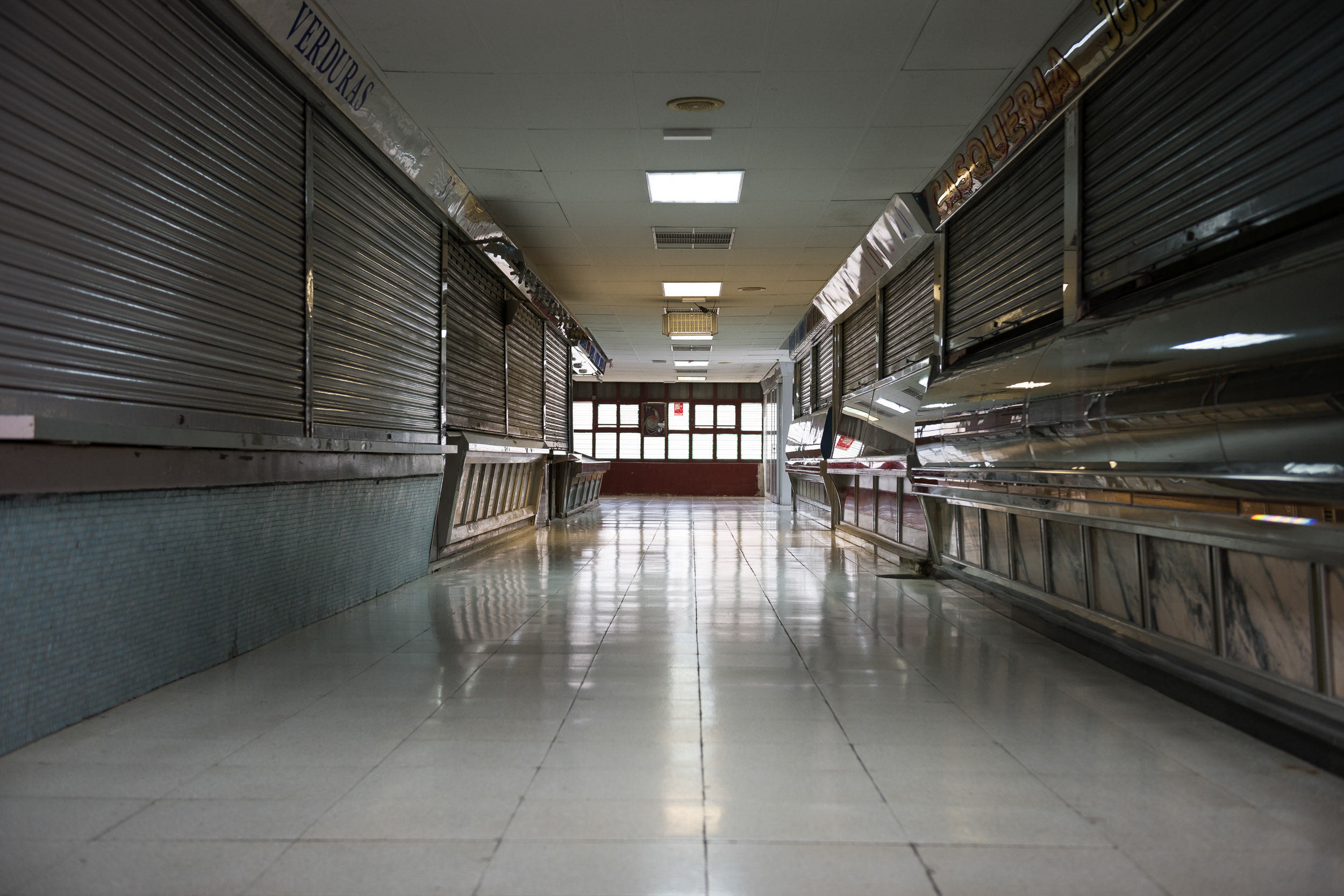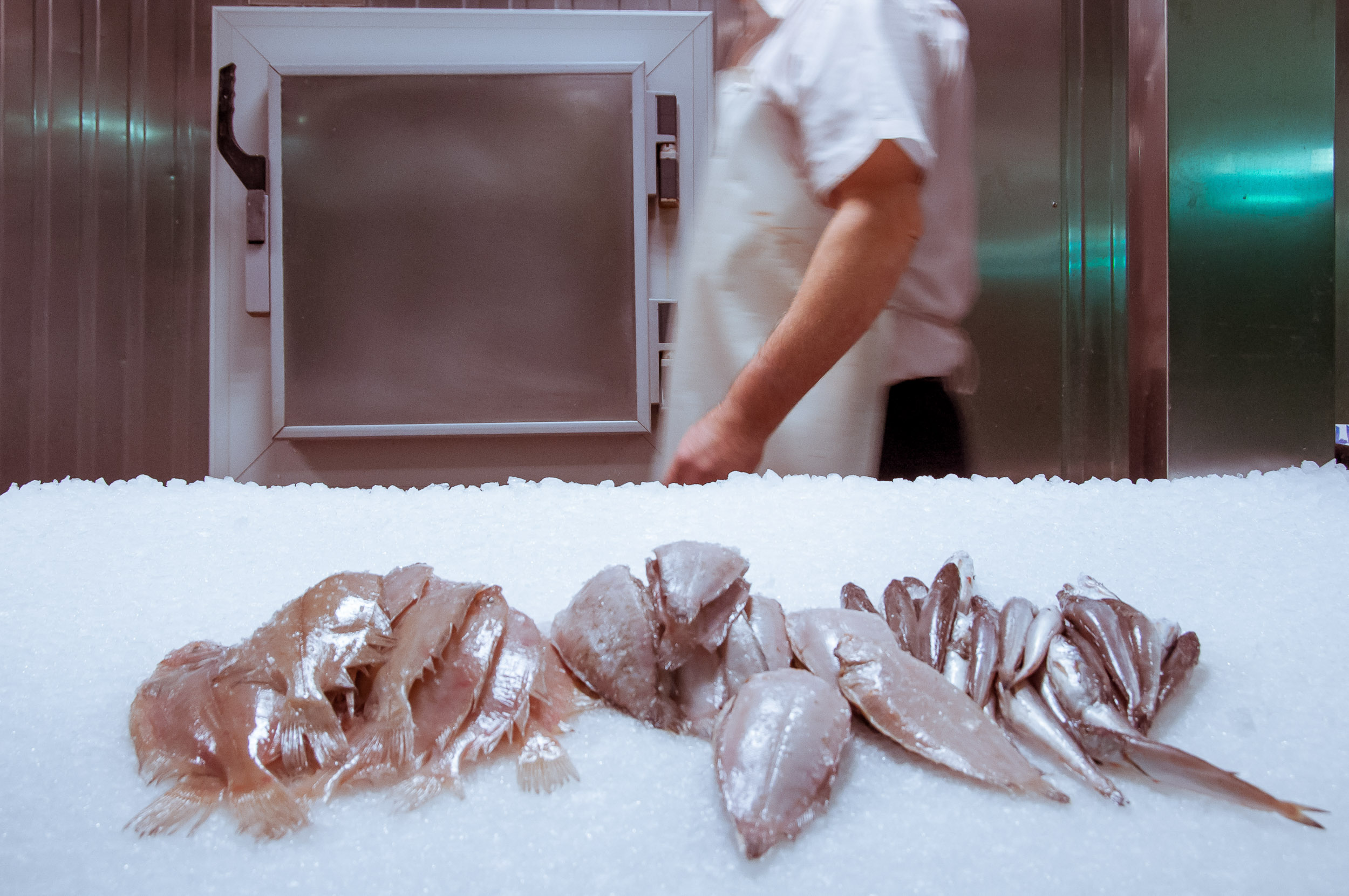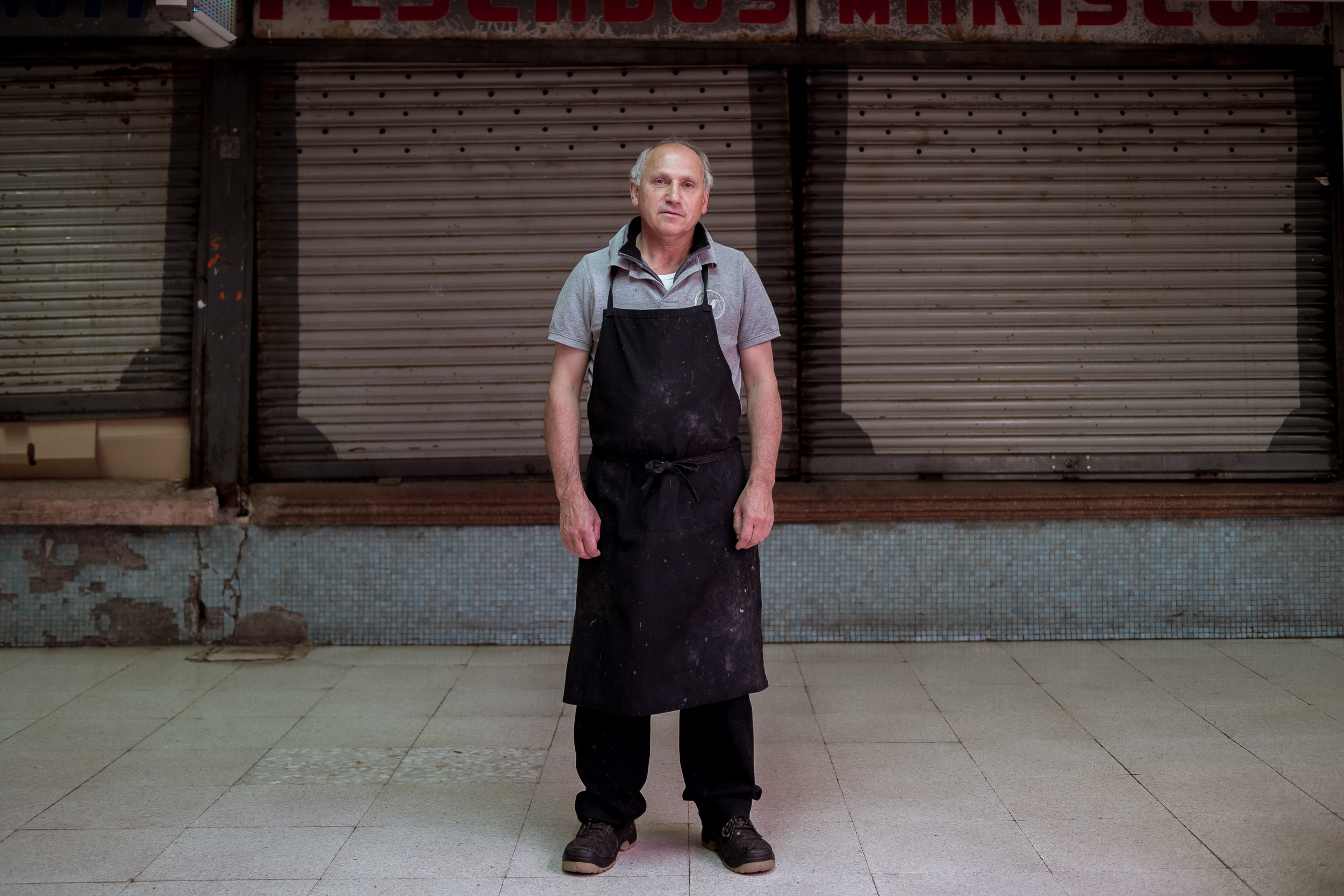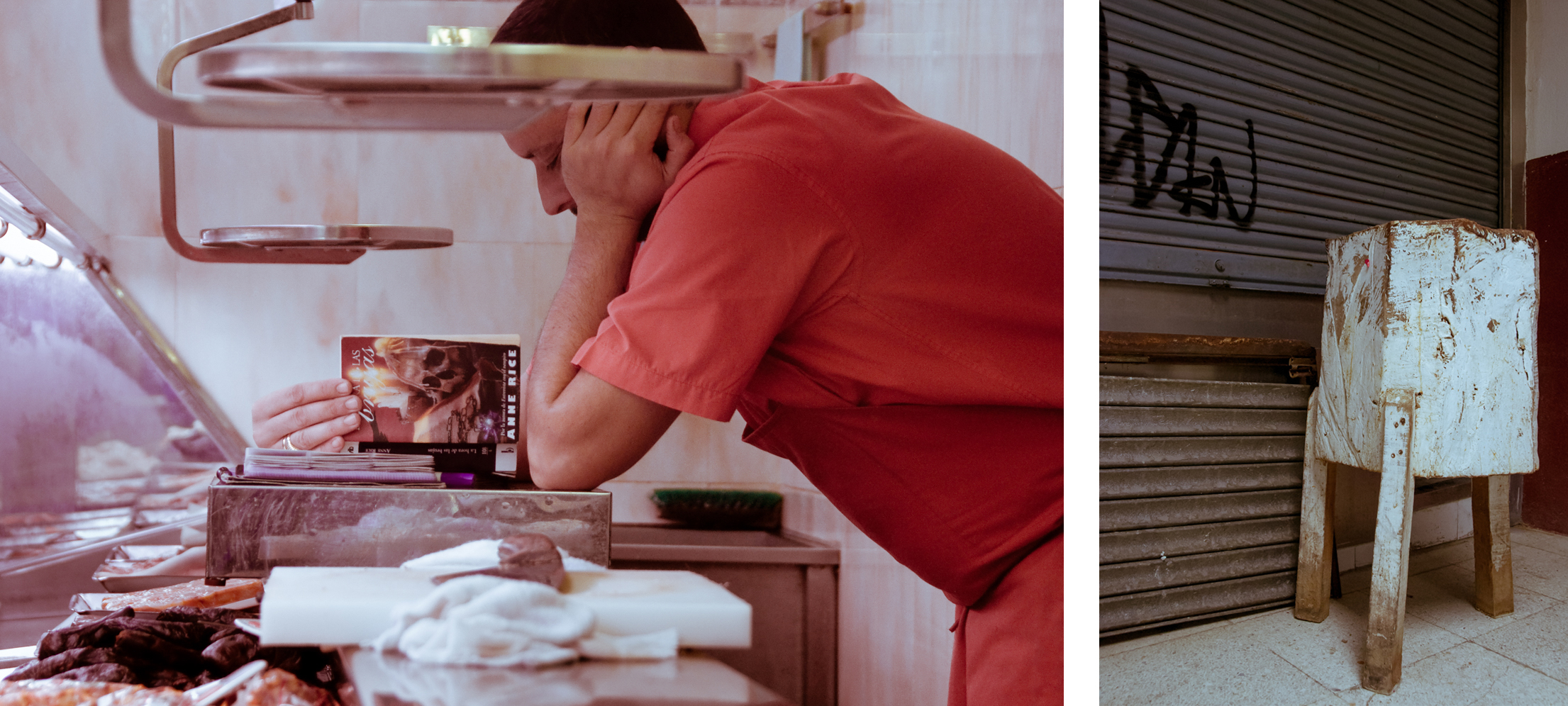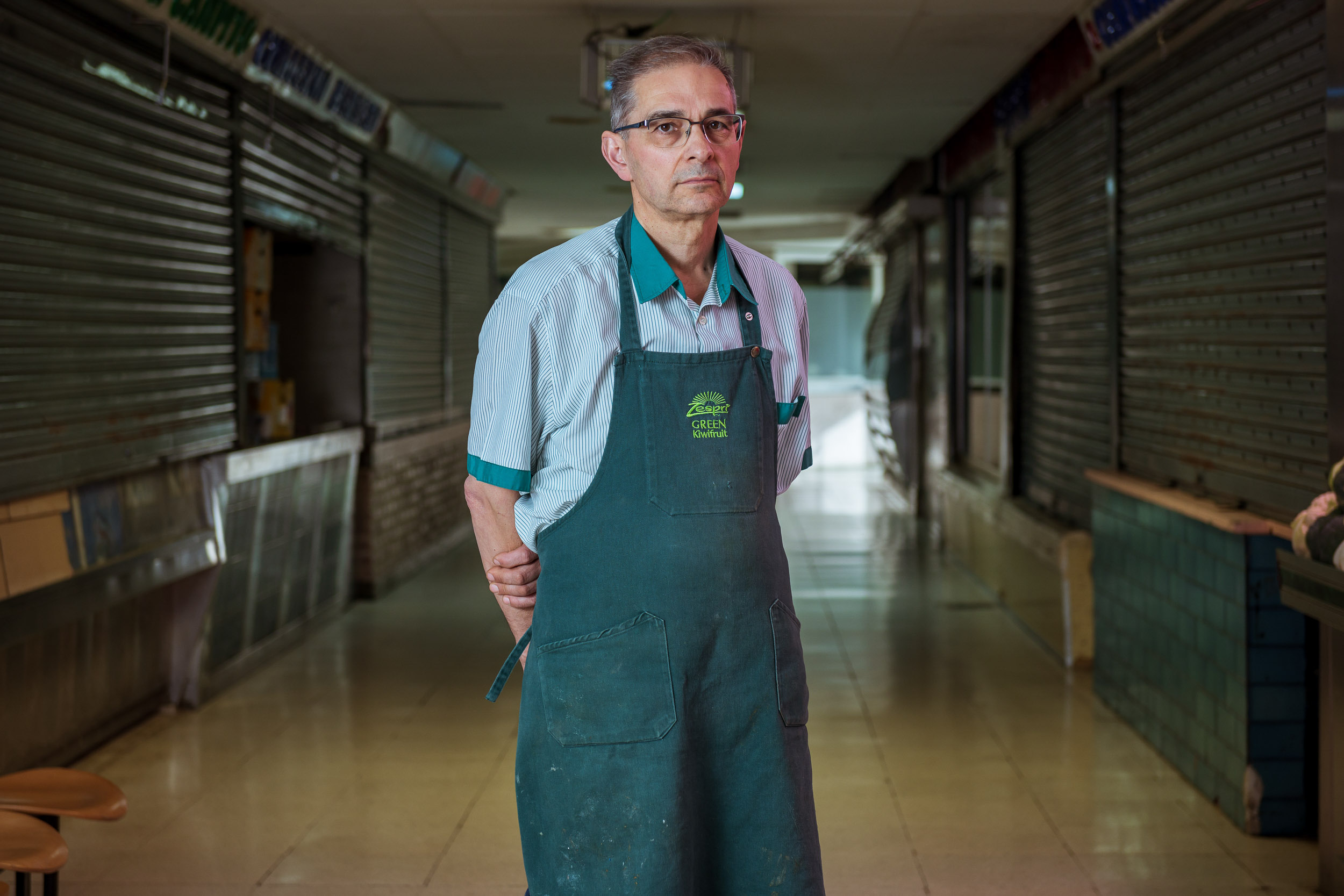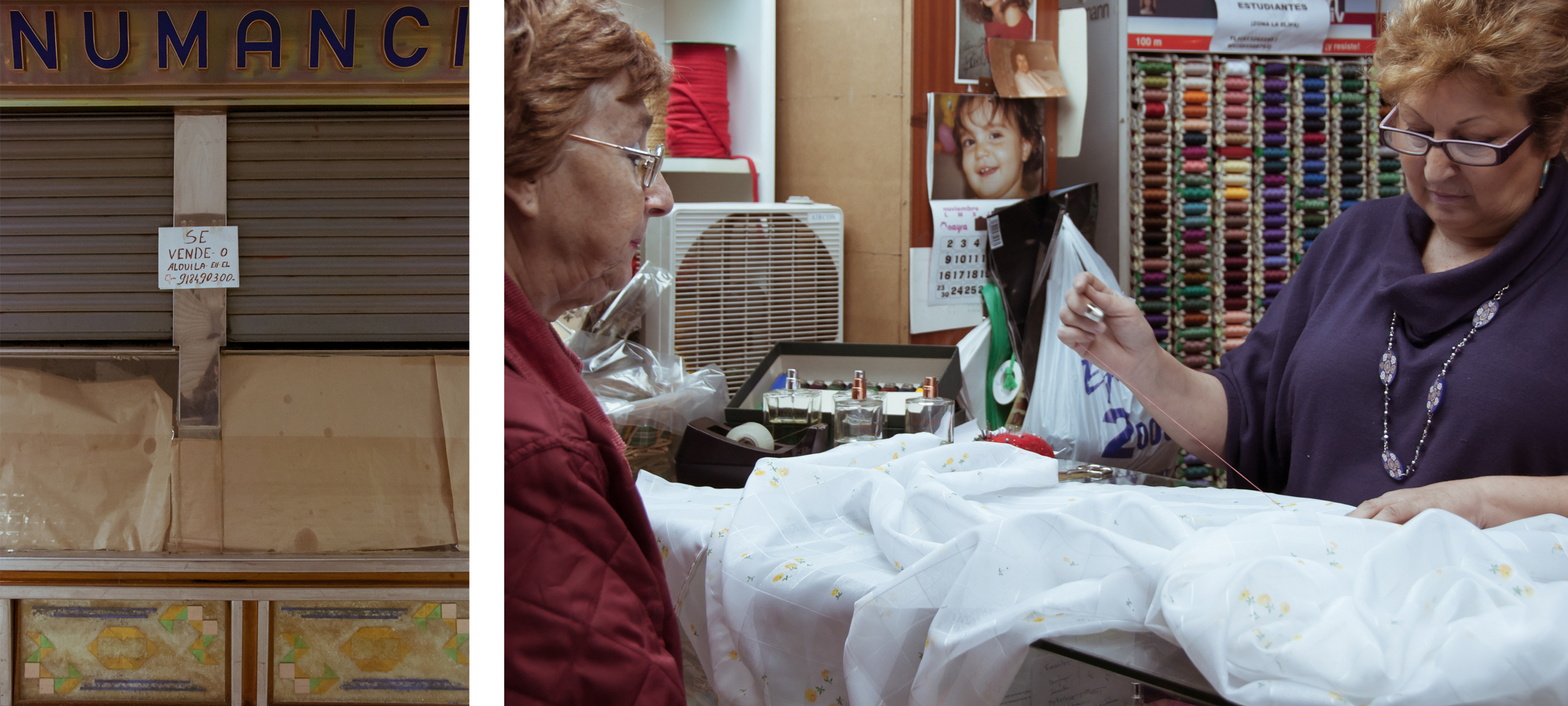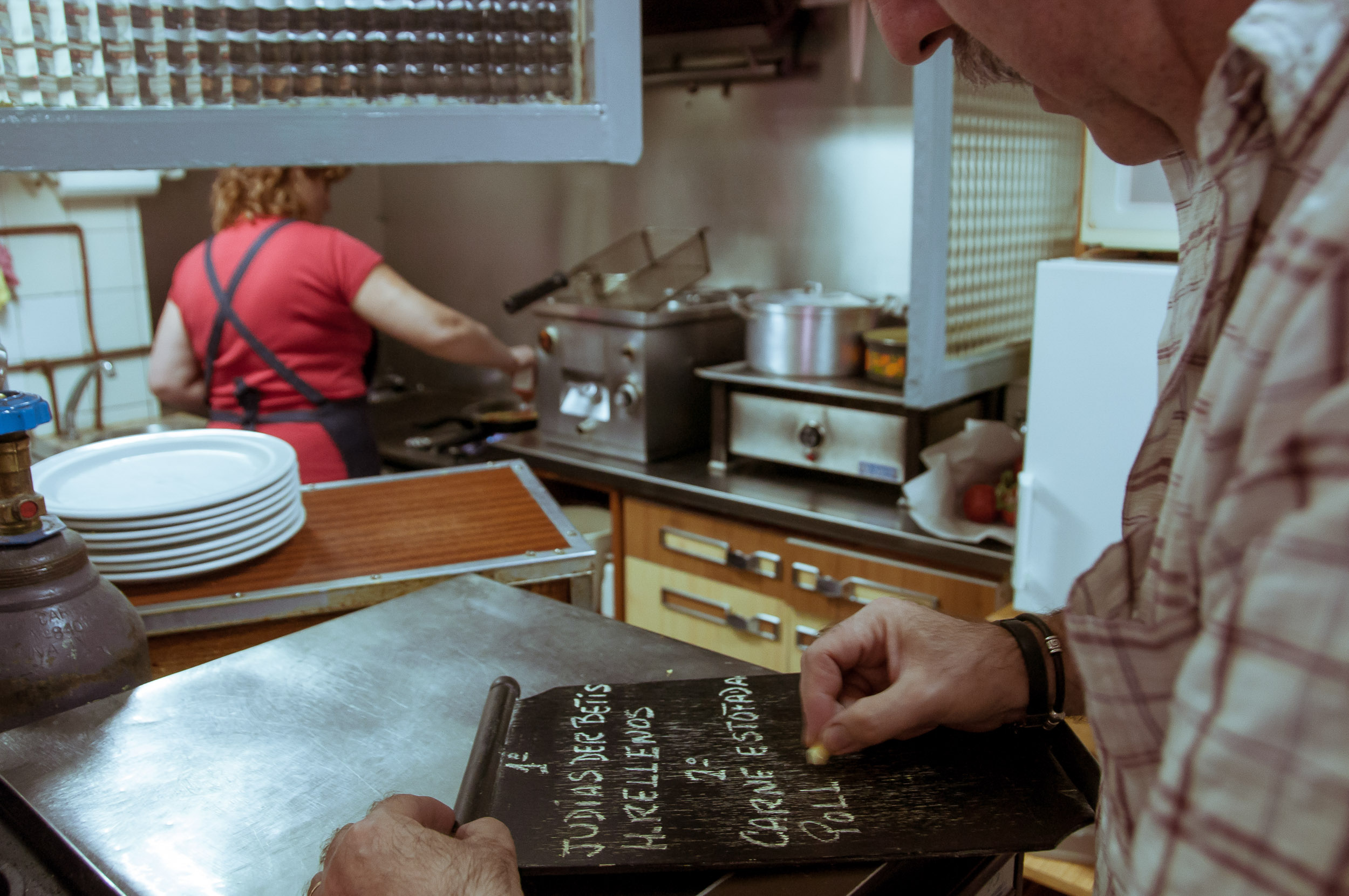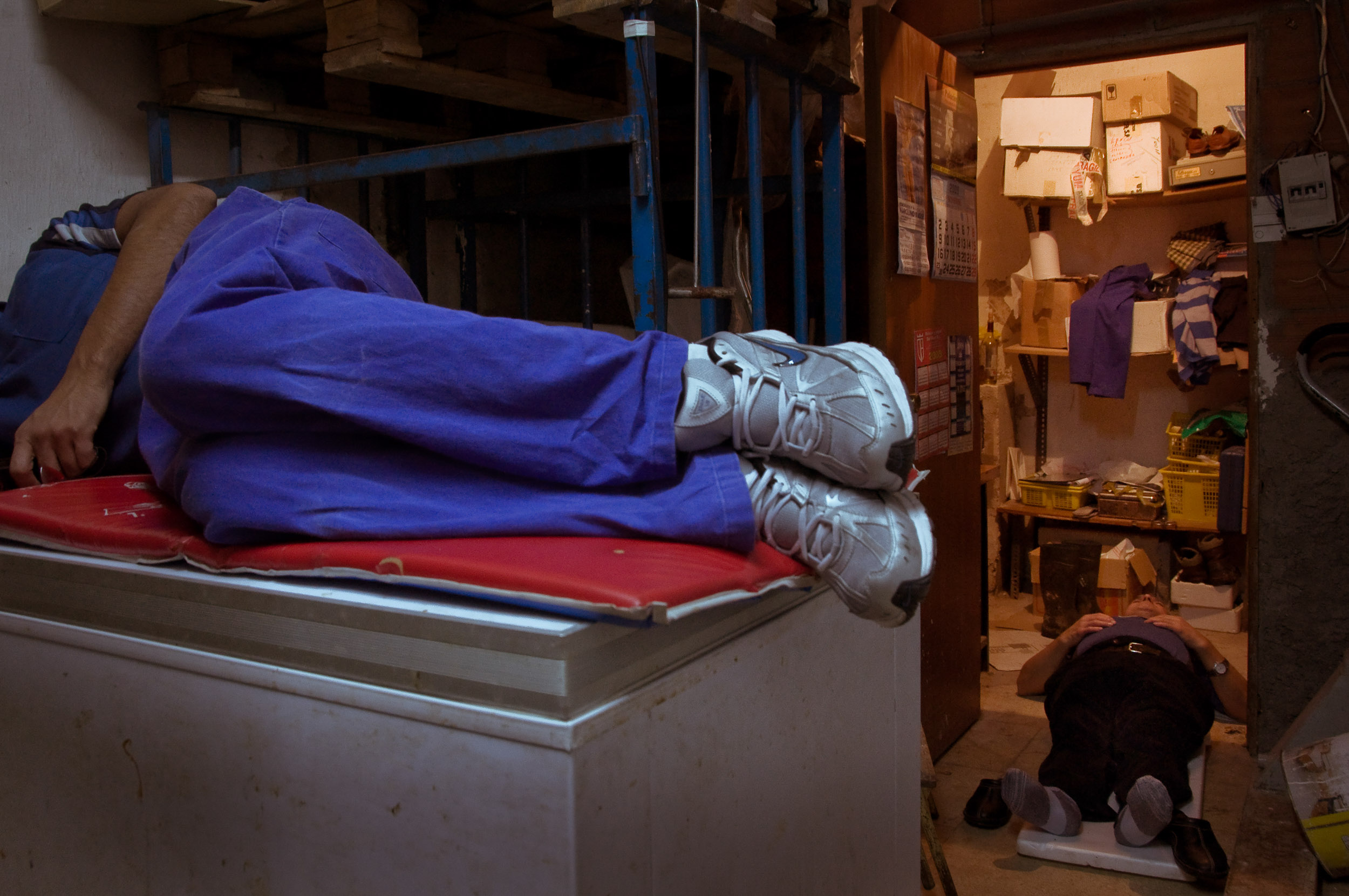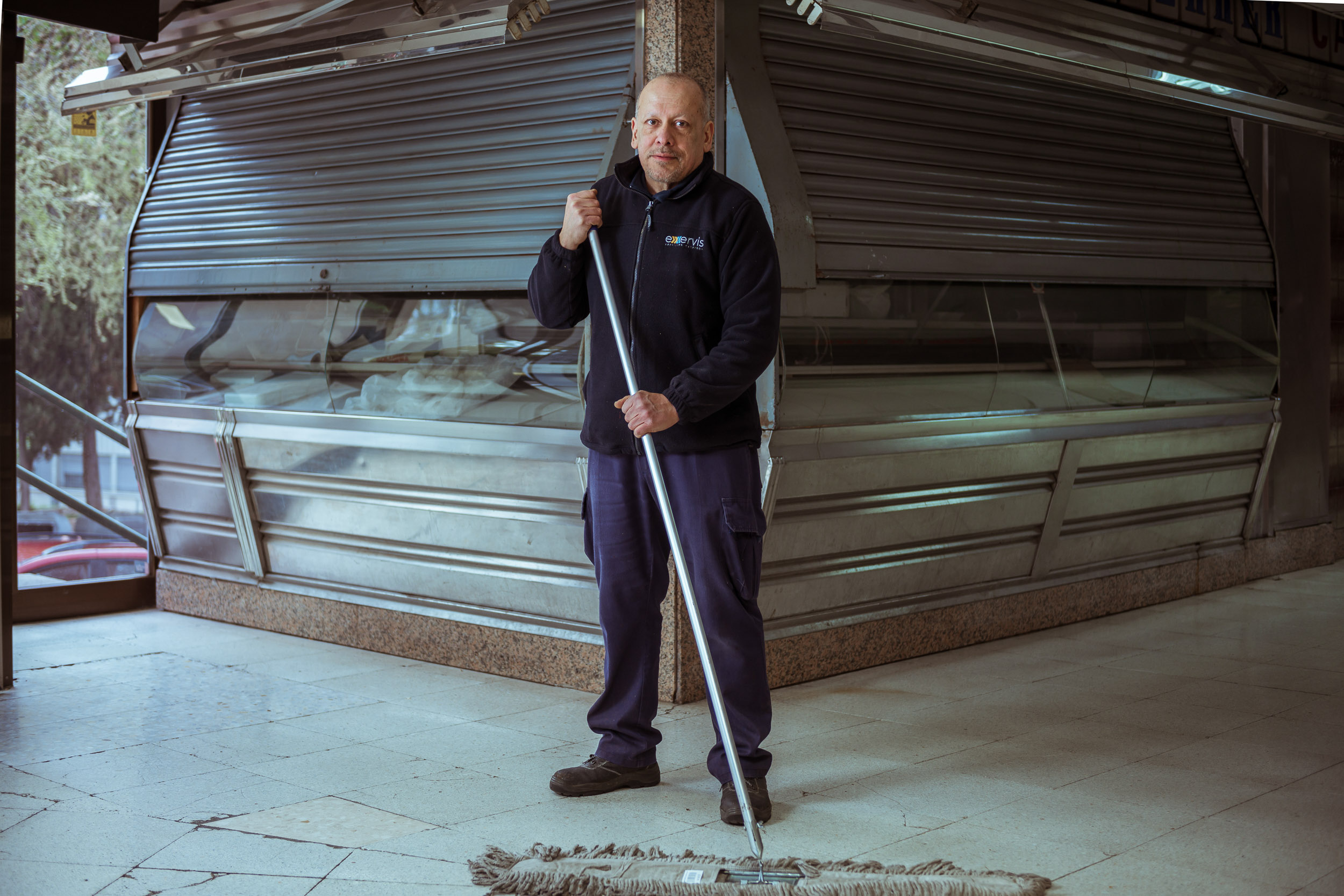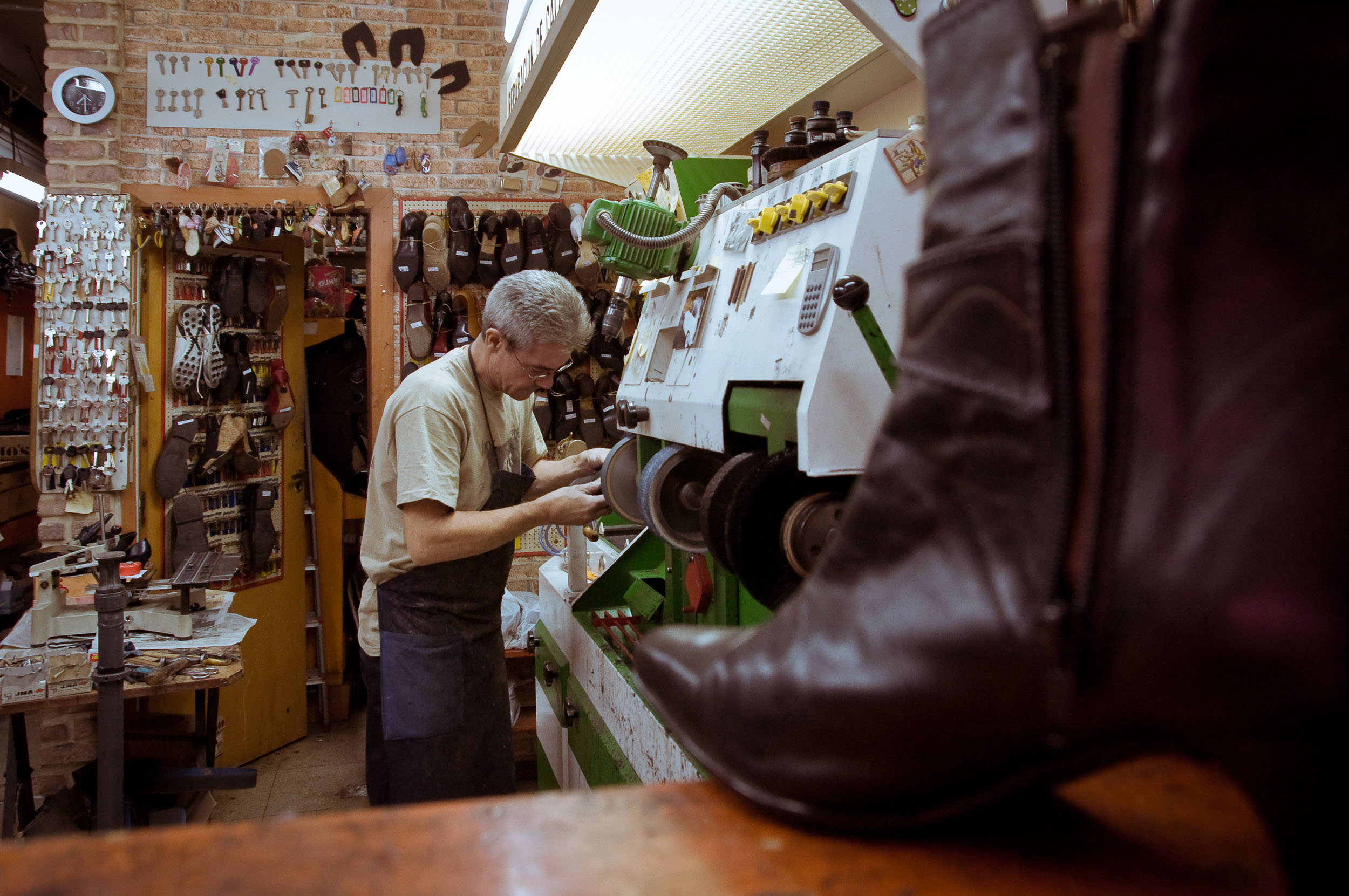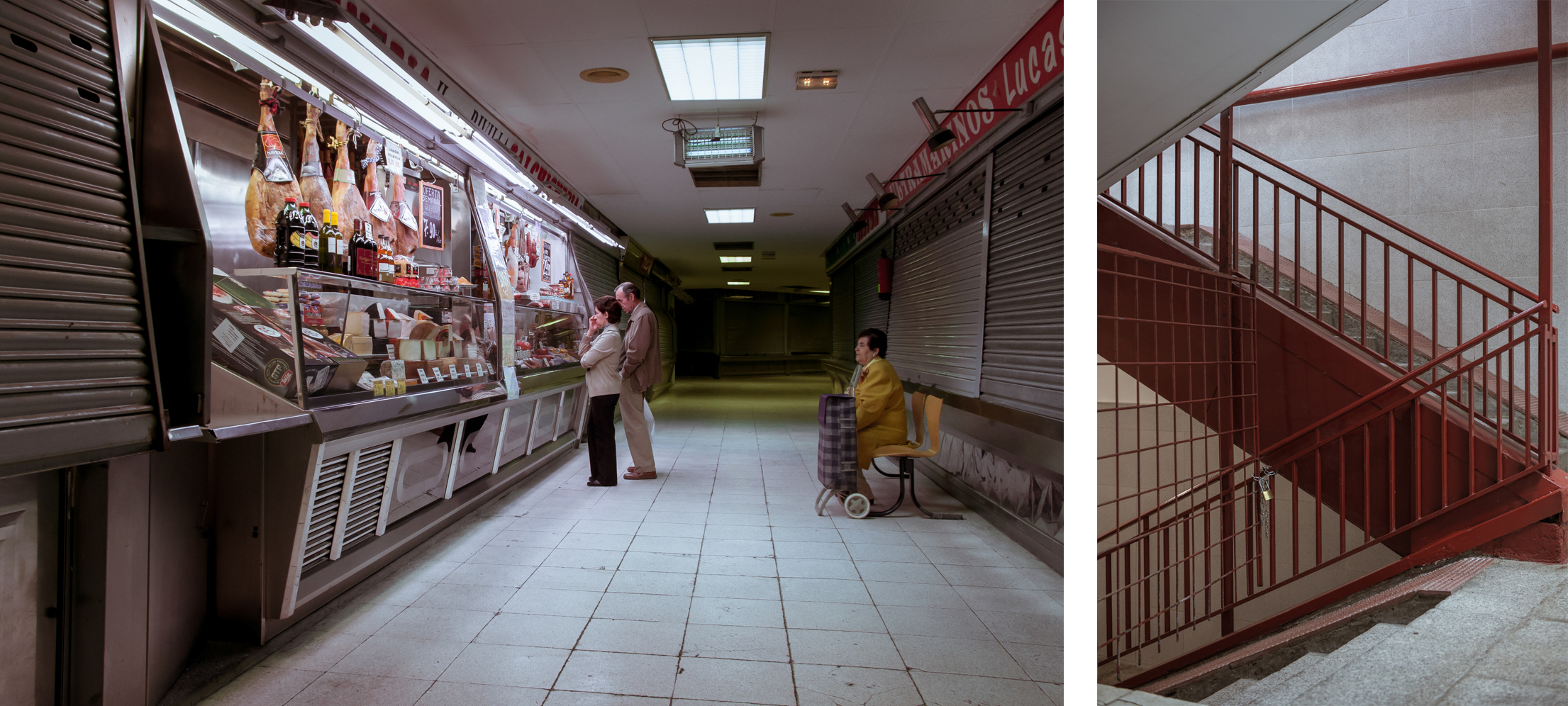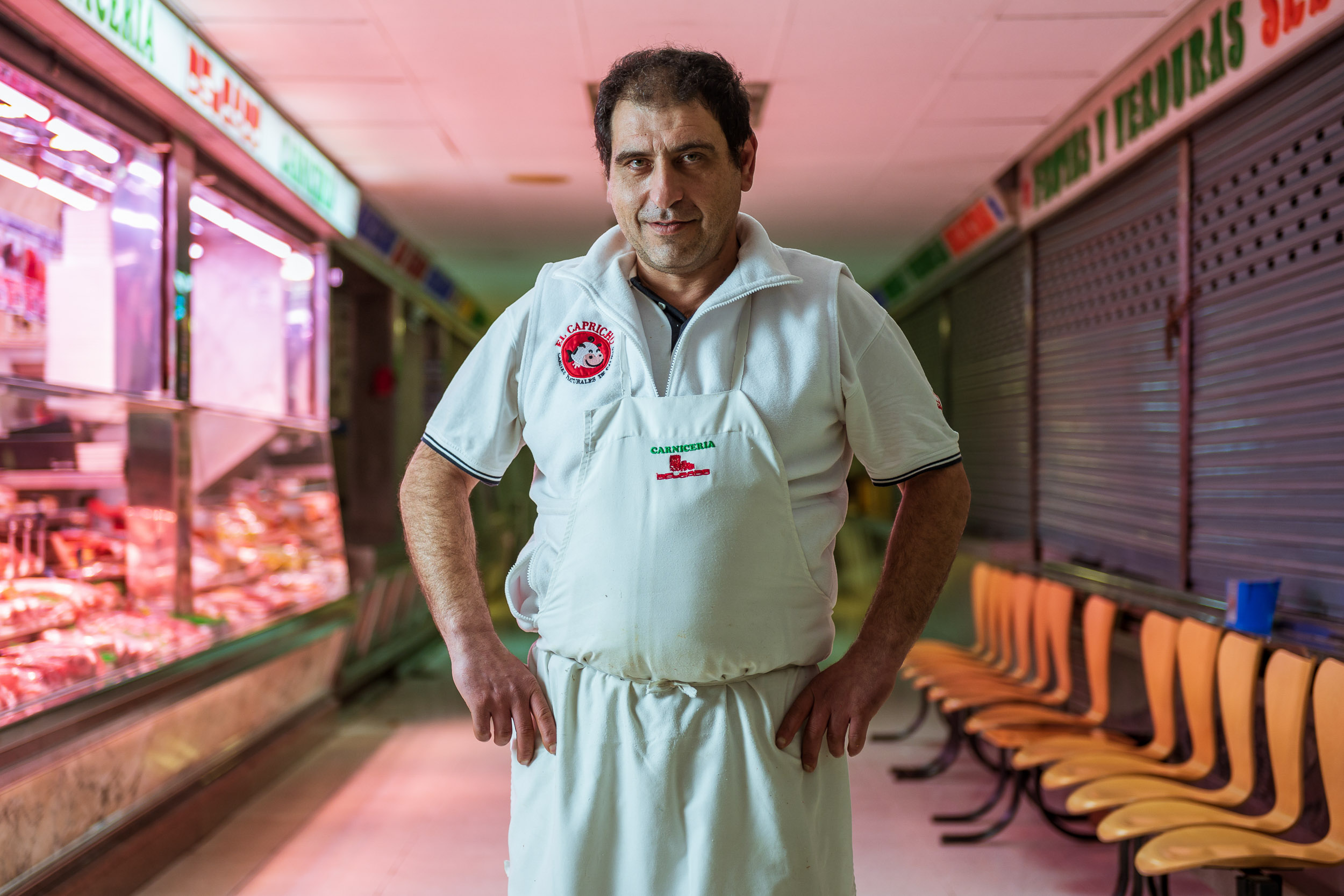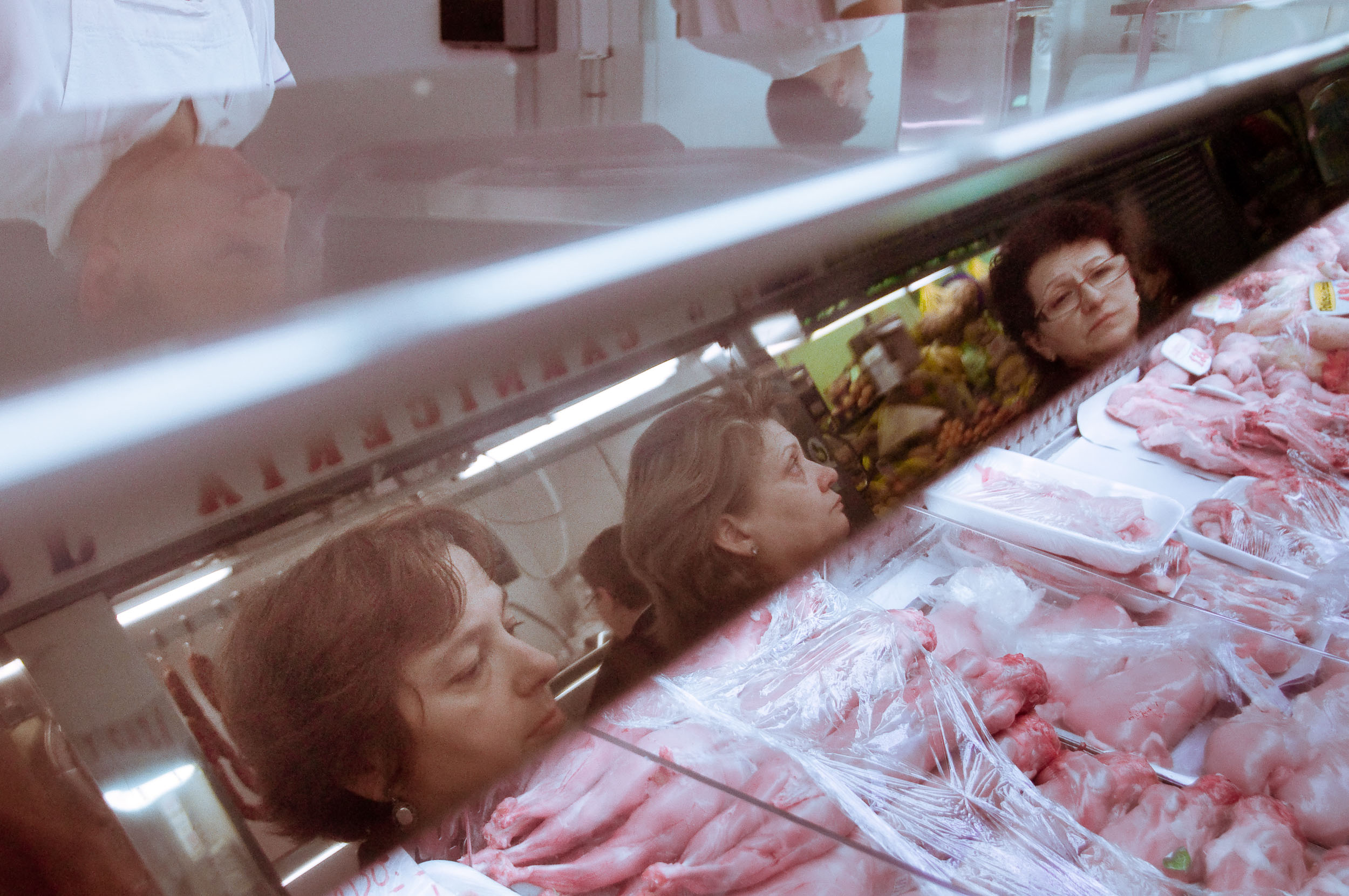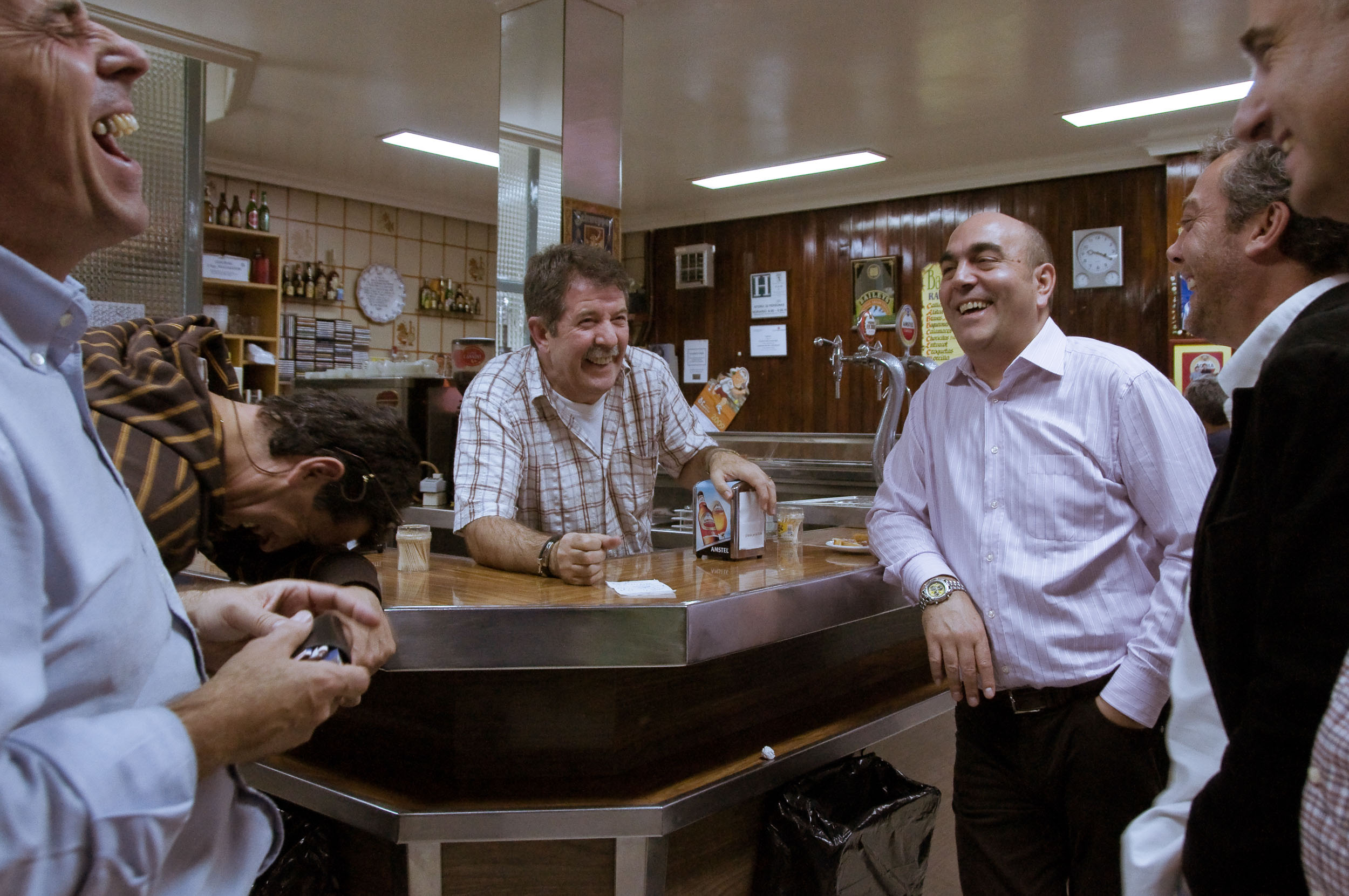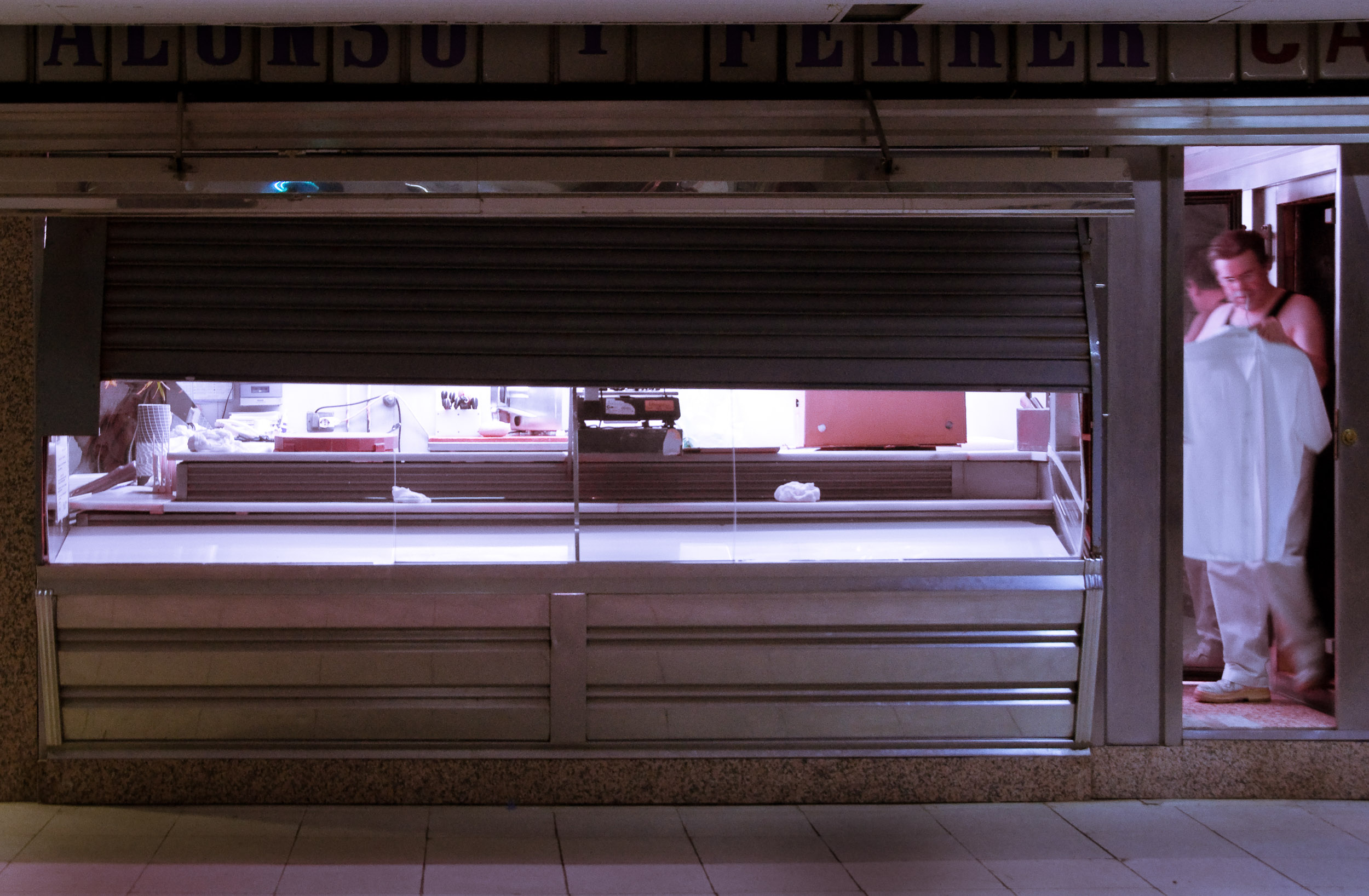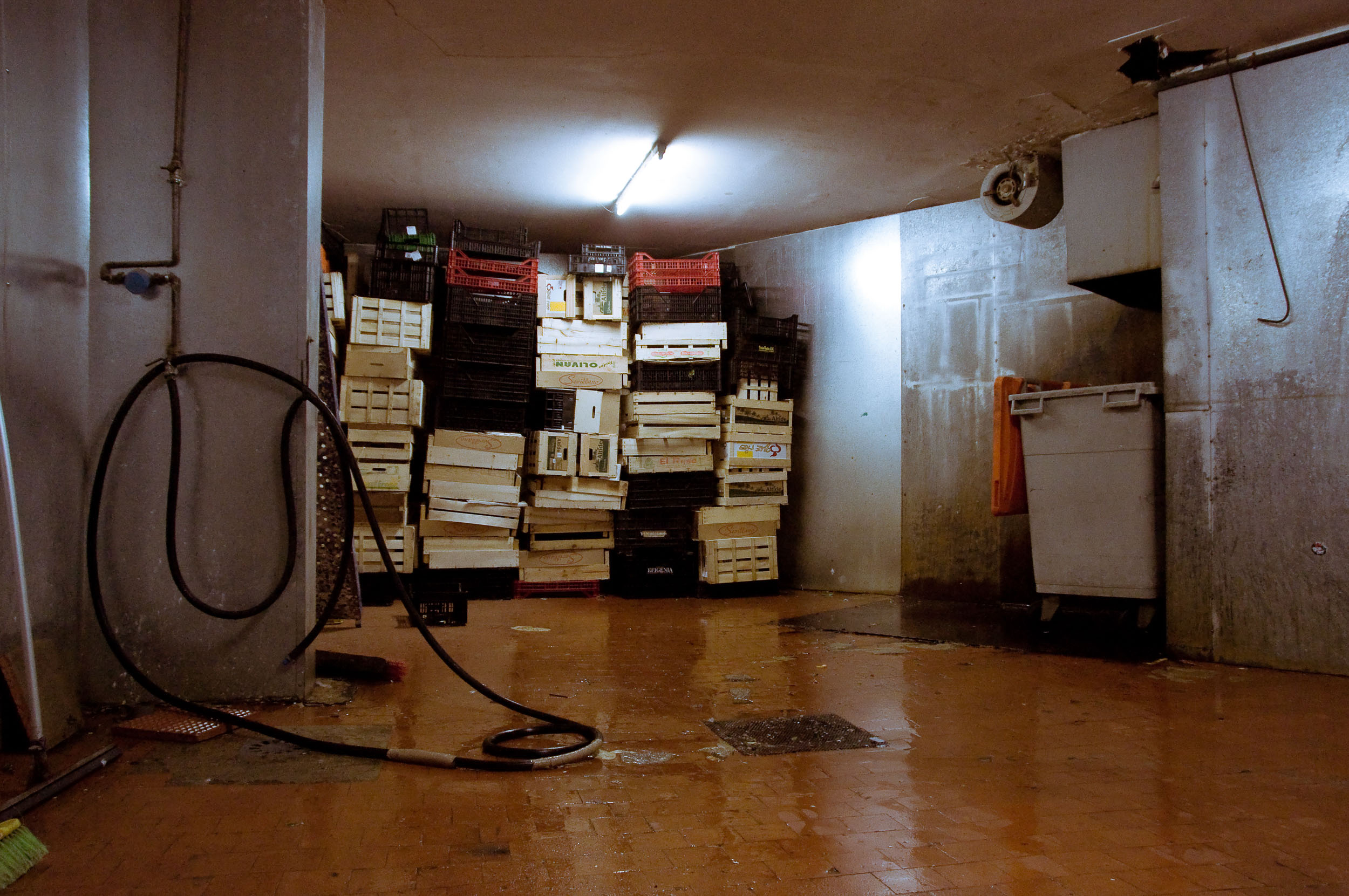LOS ÚLTIMOS DETRÁS DEL MOSTRADOR __ La Galería comercial de La Elipa abrió́ a principios de los sesenta. Con más de 100 puestos en sus dos plantas, se erigió́ como núcleo principal de la vida comercial del barrio.
La proliferación de las grandes superficies, el cambio de las formas de consumo, la falta de inversión para dar oxígeno al comercio tradicional y la ausencia de un relevo generacional, comenzaron a herir de muerte a estos locales minoristas de barrio.
En 2009 sobrevivían poco más de una docena de puestos y mientras unos continuaban abriendo el mercado durante largas jornadas para atender a una clientela fiel cada vez más escasa, otros se prejubilaban o se reinventaban abriendo sus tiendas a pie de calle.
En 2019 eran solo 7 los puestos que quedaban, reunificados en la planta baja del edificio, siendo los últimos supervivientes hasta la sentencia final de cierre total del Mercado de La Elipa.
Este proyecto se realizó en 2009. En 2019 volví a retratar a los trabajadores que quedaban 10 años después.



